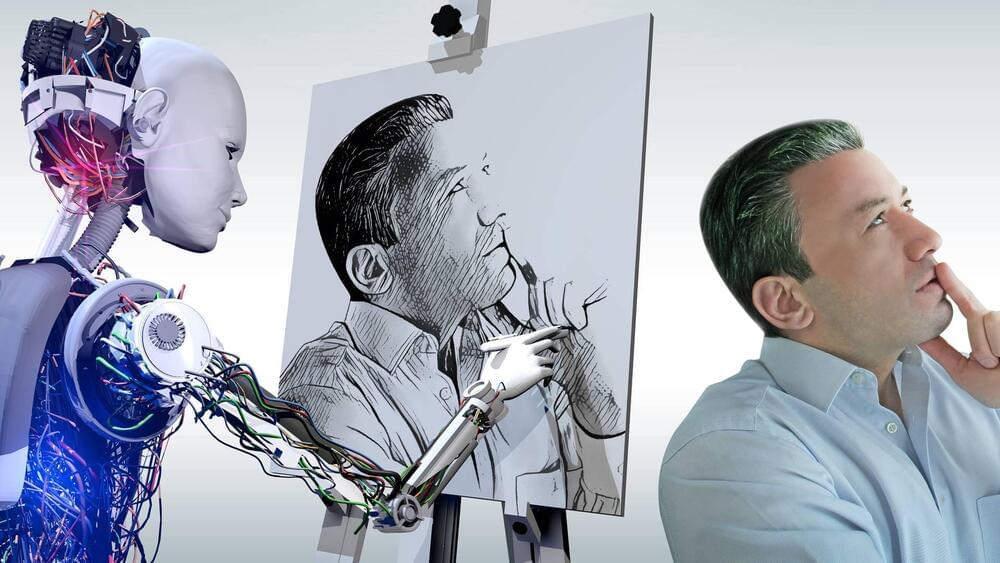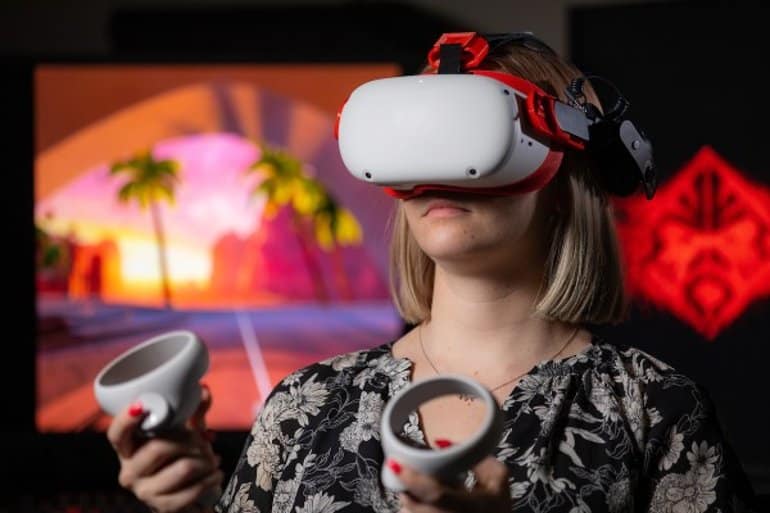Artificial intelligence has the potential to change human existence as we know it, but can it make a decent movie?
Category: entertainment – Page 46

AI-generated artwork wins US competition, angers art community
Is AI replacing artists or simply complementing their work?
Artists participating in the Colorado State Fair’s annual art competition were furious after the president of the Colorado-based tabletop gaming company Incarnate Games, Jason Allen, won the first prize in the Digital Art Category, according to a report published by CNBCTV18.com on Saturday.
An AI-generated image printed on a canvas
Allen won in the Digital Arts / Digitally Manipulated Photography category with a work called “Thé tre D’opéra Spatial” which is an AI-generated image printed on a canvas.
The painting depicts a scene that resembles a space opera. In the image, several figures in a Baroque Hall stare through a circular viewport into what looks like a sun-drenched landscape.

A Chinese game company has appointed the world’s first humanoid robot as its CEO
She will make fairer decisions for the employees.
The world of technology continues to meet the firsts. Recently, the China-based mobile game company NetDragon Websoft appointed an artificial intelligence-supported virtual human being as the general manager named “Tang Yu.”
The appointment was made on August 26 and the virtual CEO, Ms. Tang Yu started her position in the company’s principal subsidiary, Fujian NetDragon Websoft.
Gremlin/iStock.
Recently, the China-based mobile game company NetDragon Websoft appointed an artificial intelligence-supported virtual human being as the general manager named “Tang Yu.”

How People Adapt to Cybersickness From Virtual Reality
Summary: Those who are prone to motion sickness have a harder time adapting to cybersickness and different virtual reality environments. However, people can adapt to the effects of VR-associated cybersickness by playing the same game repeatedly.
Source: Iowa State University
While virtual reality has been around for decades, a combination of higher-resolution graphics, smoother tracking of the user’s movements and cheaper, sleeker headsets has propelled the immersive technology into arenas beyond gaming and military training.
This AI film is a glimpse into a future of text-to-movie generators
Text-to-video generators are already creating award-winning short films. Are AI-generated blockbusters coming next?

The Future of Human Cloning
In 1996, the first mammal cloned from an adult somatic cell was born. Named Dolly after the famous singer Dolly Parton, this sheep made headlines around the world when it was announced the following year, by demonstrating that a cloned organism could be produced from a mature cell from a specific body part, in this case, a mammary gland. Since Dolly, many other mammals including goats, rabbits, cats, and primates have been cloned. However, nearly 30 years later, no human clones have even been attempted. Today, we will discuss why, and what the future holds for human cloning.
Human cloning has been a fixture of science fiction for decades, as early as Aldous Huxley’s 1932 novel Brave New World. However, despite its popularity in film, television, and video games, it’s not been popular at all with lawmakers. As of 2018, around 70 nations have outright banned human cloning. In the United States, despite there not being a federal ban on it, 15 states ban reproductive cloning, and 10 states prevent cloned human embryos to be implanted for childbirth.
Over the years, there have been several people who claimed to have successfully cloned humans. One of the most infamous was from a religious group called the Raëlians, who have a core belief that human beings were created by extraterrestrials thousands of years ago using advanced technology. Soon after the unveiling of Dolly, the Raëlians established Clonaid, to fund the research and development of human cloning. After moving their base of operations from the US to the Bahamas, on the 26th of December, 2002, a team led by French chemist Brigitte Boisselier announced that the first successfully cloned human, named Eve, had been born a day before.
Chariots of the Gods
https://youtube.com/watch?v=HouRC6PaoR4&feature=share
1973 movie. This German film explores the theory that aliens visited Earth thousands of years ago. NTSC analog broadcast on WHYY-TV 12, January 1, 1990, midnight — 1:30 a.m. SLP-mode VHS recording. Digitized on a Sony DVD+RW disc at SP mode. Transferred to MP4 using Handbrake H.265, 30 frames, peak frame rate, 18 RF, Fast encoding, Decomb filter at default setting.

Interacting Brains Sync Without Physical Presence
Summary: The brains of people playing online video games synchronize, even when there is a physical distance between the players.
Source: University of Helsinki.
Online gaming and other types of online social interaction have become increasingly popular during the pandemic, and increased remote working and investments in social technology will likely see this trend continue.
Researchers create ‘atomic television’ that transmits live video with big atoms and small lasers
The team even transmitted video games through the atoms to a monitor.
Scientists at the US National Institute of Standards have developed an ‘Atomic Television’ that uses lasers and atom clouds to pick up video transmissions that meet the 480i resolution standard. The team demonstrated the same by transmitting live video feeds and even video games through the atoms to a monitor.
NIST
Now, why is this super cool?

Pink Floyd — Welcome to the Machine
Pink Floyd — Wish You Were Here (24-bit / 192 kHz) vinyl rip.
Animações incríveis, excelentes! : “BEYOND US — After the Collapse” by Maxime Tiberghien, Sylvain Favre, Maxime Hacquard (https://vimeo.com/325642710); “PERSECUTION” by Eddy Loukil (https://vimeo.com/301669729); “The Last in Line” by — Zaki Saati (https://www.youtube.com/watch?v=abPNEQHym1Q&list=PLS72RBixNU…ur&index=9)
BEYOND US — after the collapse:
Embark on the last journey of a giant machine, wandering trough our masterpiece of desolation… after the collapse.
BEYOND US is an independant short film, trying to spread a simple message about our civilisation and what we will leave behind after the collapse.
A short film by:
Maxime Tiberghien: instagram.com/maxtiberghien/
Sylvain Favre: instagram.com/mhsprod/
Maxime Hacquard: instagram.com/mhsprod/